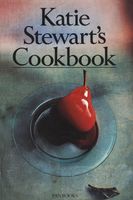Flour Using the right flour is an important start. Strong white flour is the best for breadmaking as it absorbs liquid easily and develops quickly with kneading into a firm, elastic dough that rises well to make a loaf with a good volume. White flour for breadmaking is usually labelled ‘strong’ on the packet. A recipe for bread given on the reverse side of the packet is also an indication that it's the right kind of flour. Wholemeal (or wholewheat) flour is milled from the whole grain and includes the wheatgerm and the bran with nothing taken away during processing. This flour produces a brown bread with a nutty flavour and a closer texture because the presence of the wheatgerm and bran retards the stretching qualities of the gluten. Wheatmeal flour usually has an extraction rate on the packet indicating that 80–90% of the original grain remains and that the coarsest particles of bran have been removed. Wheatmeal flour is more digestible and makes a lighter textured loaf than wholemeal. Granary flour is a special blend of wholemeal flour that includes malted wheat and rye. It is very coarse and flavoursome and can be used in place of wholemeal flour in bread recipes.


